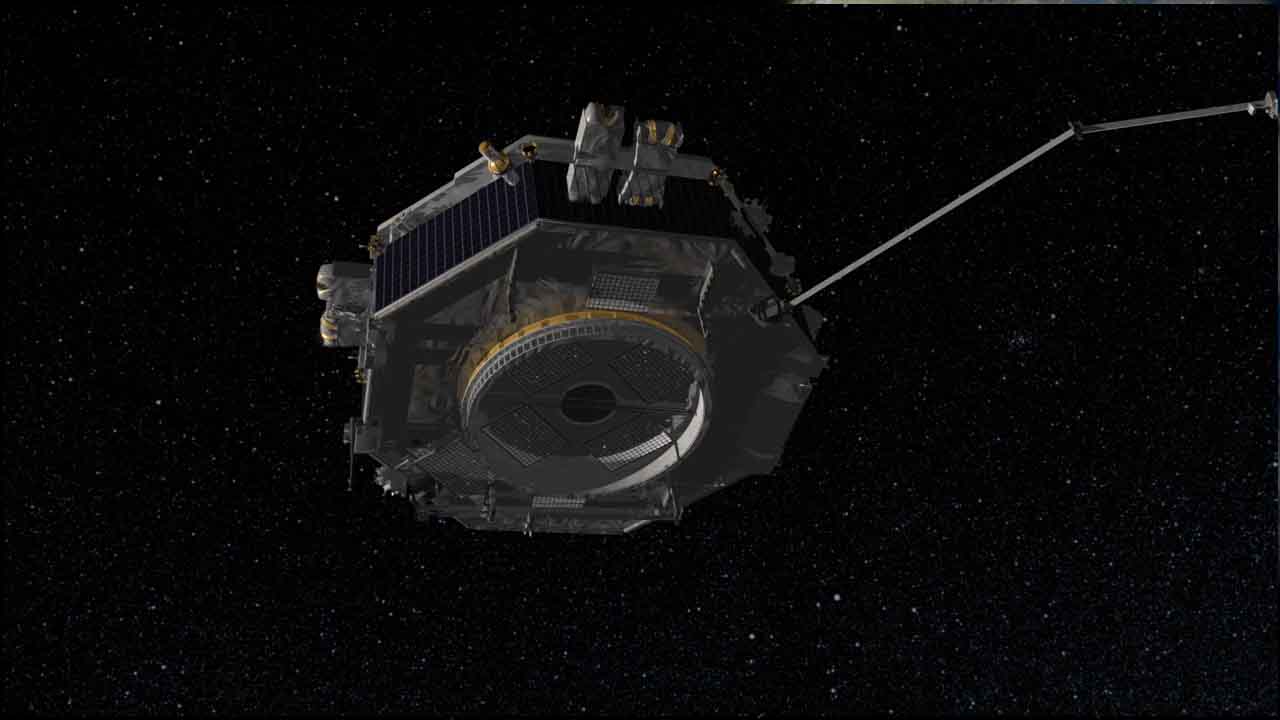MMS L-2 Prelaunch News Conference
On March 12 from Cape Canaveral Florida, NASA is scheduled to launch the Magnetospheric Multiscale, or MMS, mission, which will provide unprecedented detail on a phenomenon called magnetic reconnection. The process of reconnection involves the explosive release of energy when the magnetic fields around Earth connect and disconnect. These fields help protect Earth from harmful effects of solar storms and cosmic rays. Magnetic reconnection also occurs throughout the universe and can accelerate particles up to nearly the speed of light.
By studying reconnection in this local, natural laboratory, MMS helps us understand reconnection elsewhere as well, such as in the atmosphere of the Sun and other stars, in the vicinity of black holes and neutron stars, and at the boundary between our solar system's heliosphere and interstellar space.
MMS consists of four identical observatories that will provide the first three-dimensional view of magnetic reconnection. The four MMS observatories will fly through reconnection regions in a tight formation in well under a second, so key sensors on each spacecraft are designed to measure the space environment at rates faster than any previous mission.
For additional visuals regarding the MMS mission and science, please see our MMS Pre-launch Gallery.
Briefing participants include:
Geoffrey Yoder, deputy associate administrator
NASA Science Mission Directorate, Washington
Omar Baez, NASA launch manager Kennedy Space Center, Florida
Vernon Thorp, program manager, NASA Missions United Launch Alliance, Centennial, Colorado
Craig Tooley, NASA MMS project manager,
Goddard Space Flight Center, Greenbelt, Maryland
Jim Burch, principal investigator Southwest Research Institute, San Antonio, Texas
Clay Flinn, launch weather officer, 45th Weather Squadron
Cape Canaveral Air Force Station, Florida
MMS Launch and Deployment Animation
Video showing the following images: (1) Flares from a black hole accredion disk as observed by the NASA Chandra spacecraft; (2) Solar flares on the Sun observed by SDO; (3) Animation of CME impact on the Earth's magnetosphere; (4) Image of proton aurora from the NSA IMAGE spacecraft. No audio. Credit: NASA and SwRI

Reconnection diagram
Electron currents in reconnection simulation.
Credit:Dr. Homa Karimabadi, UCSD
MMS orbits viewed from above north pole.
Credit: SwRI
Video of MMS in tetrahedron formation
Credit: NASA/GSFC
Animation and visualization of MMS orbit and tetrahedron formation
Credit: NASA/GSFC/CIL
Animation of MMS from separation through boom deployment.
Credit: NASA/GSFC/CIL
Credits
Please give credit for this item to:
NASA's Goddard Space Flight Center
-
Producer
- Genna Duberstein (USRA)
Release date
This page was originally published on Tuesday, March 10, 2015.
This page was last updated on Wednesday, May 3, 2023 at 1:49 PM EDT.
